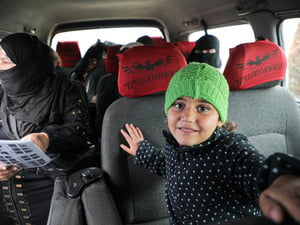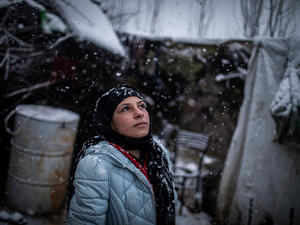Refugees and migrants on Western Balkans route at increasing risk – UNHCR
Refugees and migrants on Western Balkans route at increasing risk – UNHCR

Syrian refugees try to reach the Greek border in an effort to continue their trip to central Europe.
GENEVA, June 12 (UNHCR) - Increasing numbers of refugees and migrants using the less well known "Western Balkans route" to reach Europe are facing growing risks, including abuse, violence, and accidents while walking along remote train tracks.
The UN refugee agency added on Friday there had been a dramatic increase in men, women and children walking for days along this route, which is much less in the spotlight than Mediterranean sea crossings
Some are registering for asylum in the Balkans while others headed onwards, but both groups face mounting danger, according to UNHCR.
"The situation is particularly difficult in the Former Yugoslav Republic of Macedonia [FYROM] where refugees and migrants follow rail tracks and mountain routes, walking for days exposed to train accidents, natural elements and to abuse and threats from smugglers and criminal networks," UNHCR spokesperson Adrian Edwards told a press briefing in Geneva.
Between 2012 and 2014 the number of people registering their intention to seek asylum in the Western Balkans increased from 5,000 to 20,000.
This year the numbers have risen still further, with over 22,000 asylum claims lodged in Serbia alone in the first five months of the year, six times higher than in the same period of 2014. In May alone, 10,000 new asylum-seekers were registered by the authorities.
UNHCR says authorities and civil society in southern Serbia are battling to provide basic humanitarian aid, registration and accommodation for around 200 asylum-seekers that approach them every day for help, having crossed the border from FYROM.
"We estimate that at least an equal number of people potentially in need of international protection forego registration, have been moving through the region irregularly, with the help of smugglers. The vast majority of them seek to reach western Europe crossing into Hungary," Edwards added.
The majority of people using this route are mainly from Syria, Afghanistan, Iraq, Eritrea and Somalia. They mostly come via Greece, and with the recent surge in sea arrivals there, the number of people undertaking this journey is expected to grow.
UNHCR has been advocating for improvements to the asylum systems in this region since the early 1990s as existing capacities are inadequate for the scale of arrivals. It says the current situation is critical and will require further support, including through joint efforts with the European Union, national governments, and NGOs.








